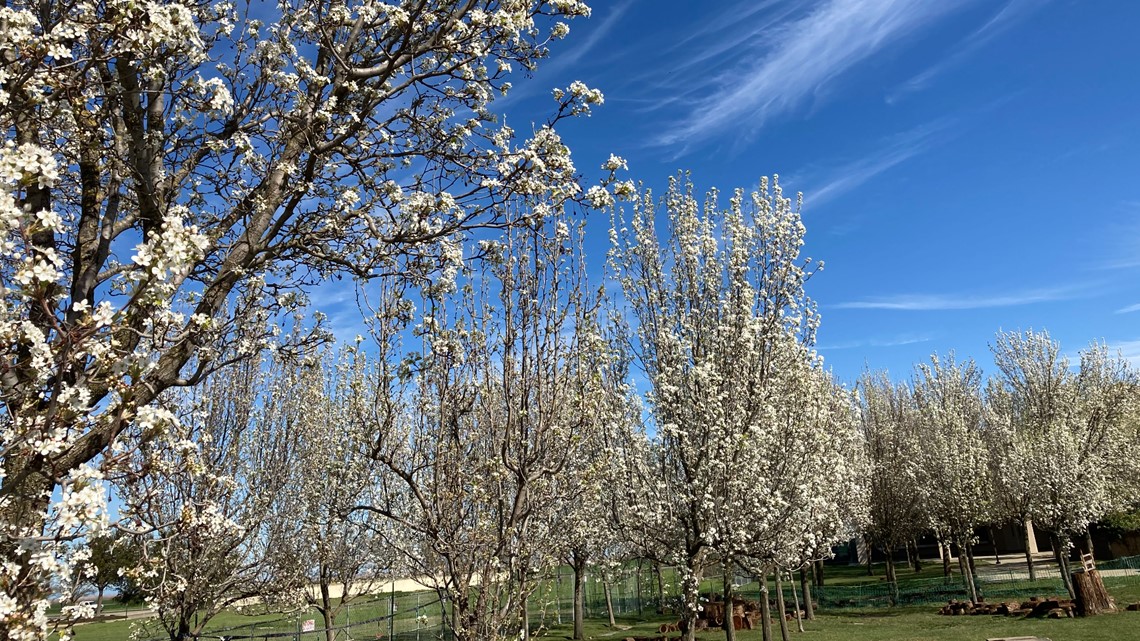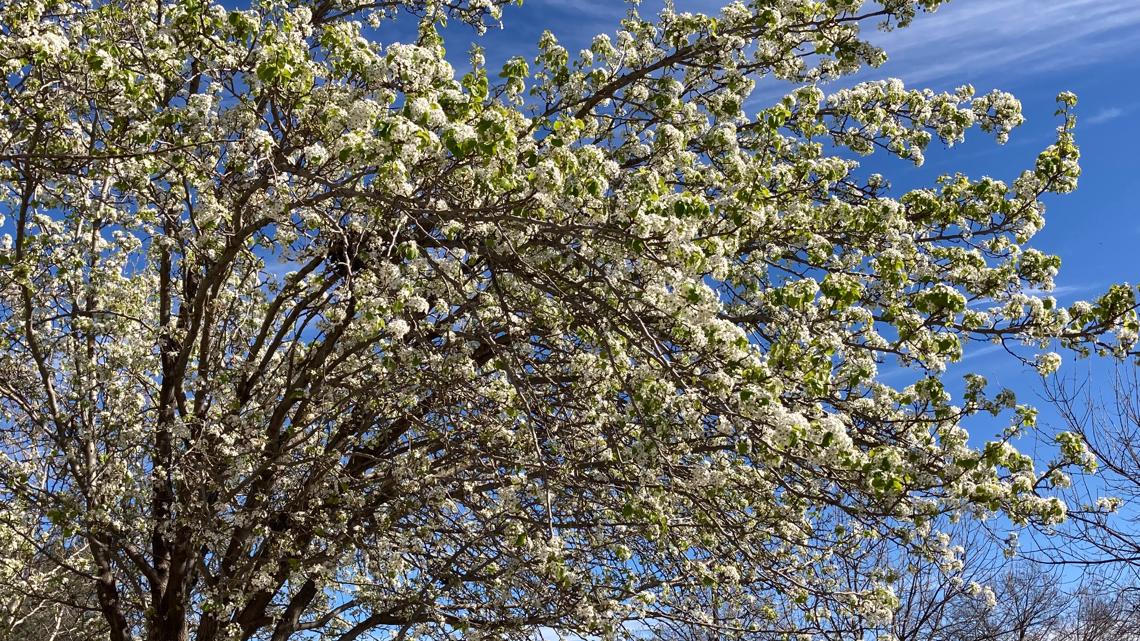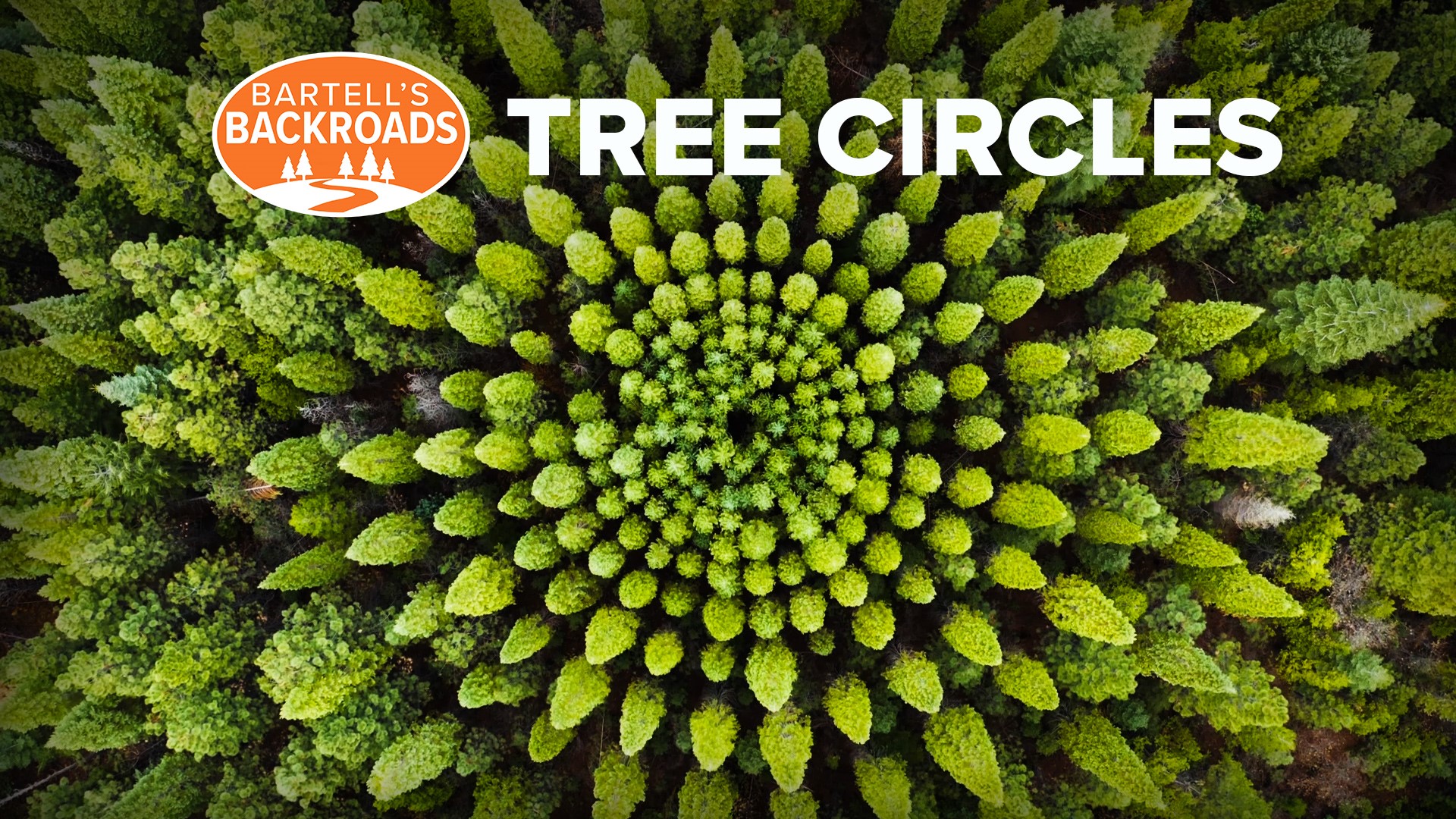SACRAMENTO, California — With spring temperatures and occasional rainy days, Sacramento's beautiful foliage is in bloom, which means incredible colors, thick flower buds and…what is that awful smell?!
Every year, a malodorous scent permeates the air of the Sacramento region, and every year, an influx of questions roll in on various social media platforms wondering what on earth the horrible smell could be.
It's the ornamental pear tree, with beautiful white blossoms and smell that is reminiscent of, well, fetid pool water.
Let's not beat around the bush here, this tree reeks. However, Missy Gable, Director of the UC Davis Master Gardeners program, says that the smell is really only bad to us humans.
"This particular pear tree does have a fragrance — I have to admit, I'm not a chemist — but my understanding is that the chemical compounds that the tree creates are derivative of ammonia, which is typically a very offensive smell to a lot of people," Gable said.
For other particular species, that dirty dumpster scent is probably extremely attractive.
"So, plants have flowers and fragrances, not for our benefit: it's for the pollinating insects they're trying to attract," Gable said.


The ornamental pear tree is actually in the rose family, funnily enough. It is not to be confused with the Ginko tree (ABC10 has also covered this tree in the past as wreaking havoc on the nostrils). These ornamental pear trees are their own odorous beast, but knowing as we do now just how bad the smell can get, why would cities across the Sacramento region and beyond plant these trees?
"We tend to find very desirable certain traits of this tree," Gable said.
Forget about the smell for a second. The ornamental pear has a broad, round structure, which many find pleasing to the eye. It is small and compact. It's fast growing, meaning immediate results for people who want big, lush and beautiful trees.
Ornamental pear trees also look good year round. They showcase their beautiful white flowers in spring, vibrant green leaves in summer, and fall colors in autumn.
Plus, despite some who would say otherwise, the ornamental pear is not so harsh on allergies because it is pollinated by insects (like bees), rather than wind-pollinated. The latter are the real troublemakers when it comes to seasonal allergies. And despite being categorized as an invasive species on some lists, California does not currently list the ornamental pear as invasive.
"Basically, ornamental pears were introduced as a landscape tree, specifically a street tree...in the 1960s and planted pretty widely throughout the United States," Gable said.
As a horticulturalist, Gable says she tends to find the ornamental pear to be a challenging tree, but not for the reasons you might think.
"They tend to grow very upright branches that are smashed together really closely, and that poses some problems," Gable said. "These trees, because of their branching structure, you either have to know what you're doing and prune it in a way that opens up the structure of the tree, or, in like the wind storms like the one we saw recently, you're gonna see a lot of breaking out in this tree where branches will split out, or you'll see just a lot of plant matter coming off of this tree."


It's no wonder the pear tree varieties we see around Sacramento are not everyone's favorite tree. Gable has some suggestions for people who want a tree like the ornamental pear, but without the harsh odor and brittle branch structure.
You can check out your local Master Gardeners program at this website, which Gable says is your best resource for finding a plant that works for you, or you can look into these two types of trees:
- Chinese fringe tree (Chionanthus retusus)
- Chilean Lily of the Valley (Crinodendron patagua)
All in all though, the pervasiveness of this tree is our own faults. People want a fast growing tree. They want pretty blossoms in the spring and a full range of fall colors later in the year. Trees like the ornamental pear drive up home values, and make for a quick solution to an otherwise boring looking landscape.
"Blooming is a short period of time," Gable said. "There are some benefits to this tree that we can think about. Like, from an environmental perspective, we don't really want to go out and just cut down all of these trees because they're, for the most part, thriving and mature…Would I encourage people to plant something else? Sure!"
ABC10: Watch, Download, Read
The owner of Queen Sheba in Sacramento uses the Ethiopian grain teff in her cooking. It’s a gluten-free gain, high in iron and fiber.



















